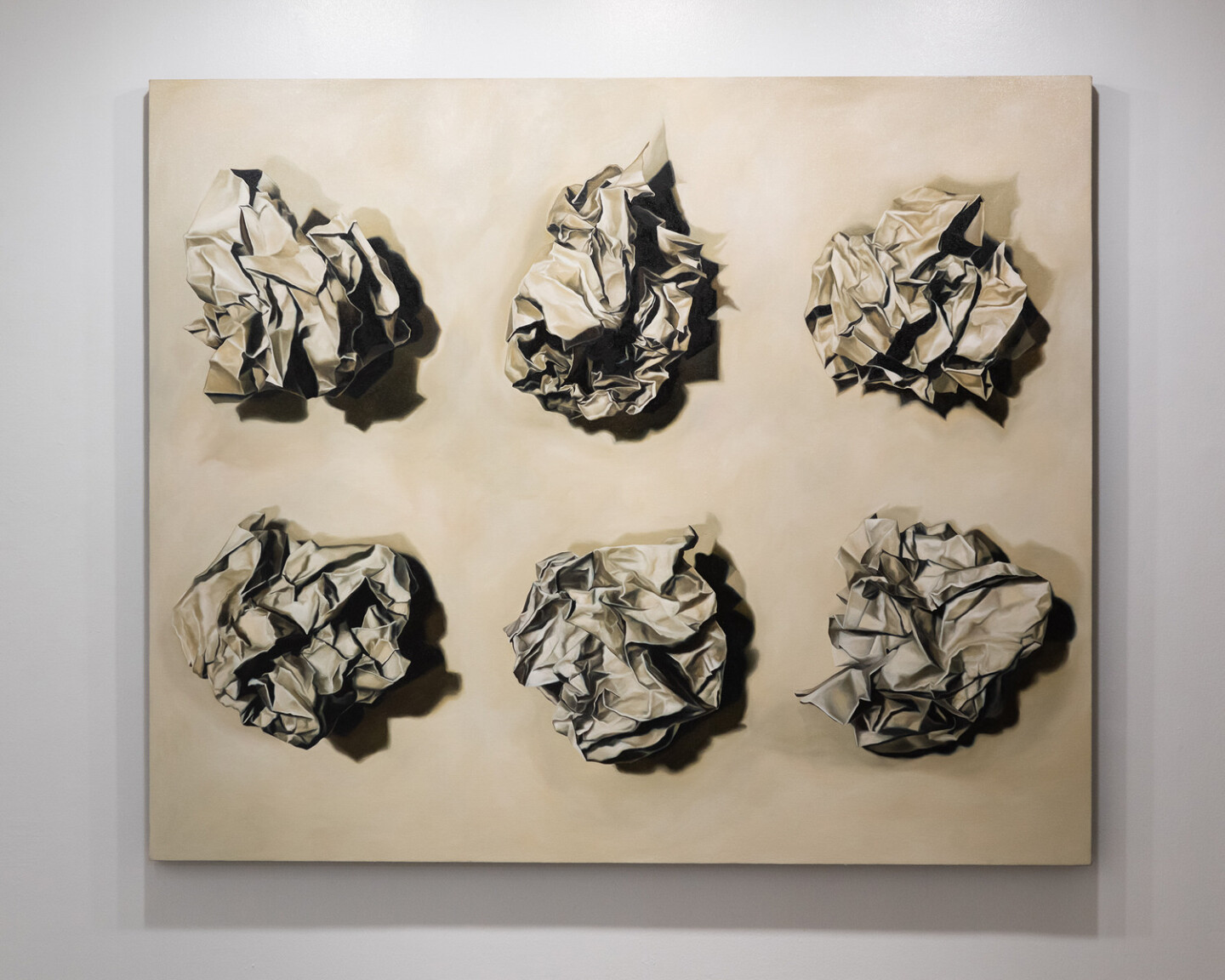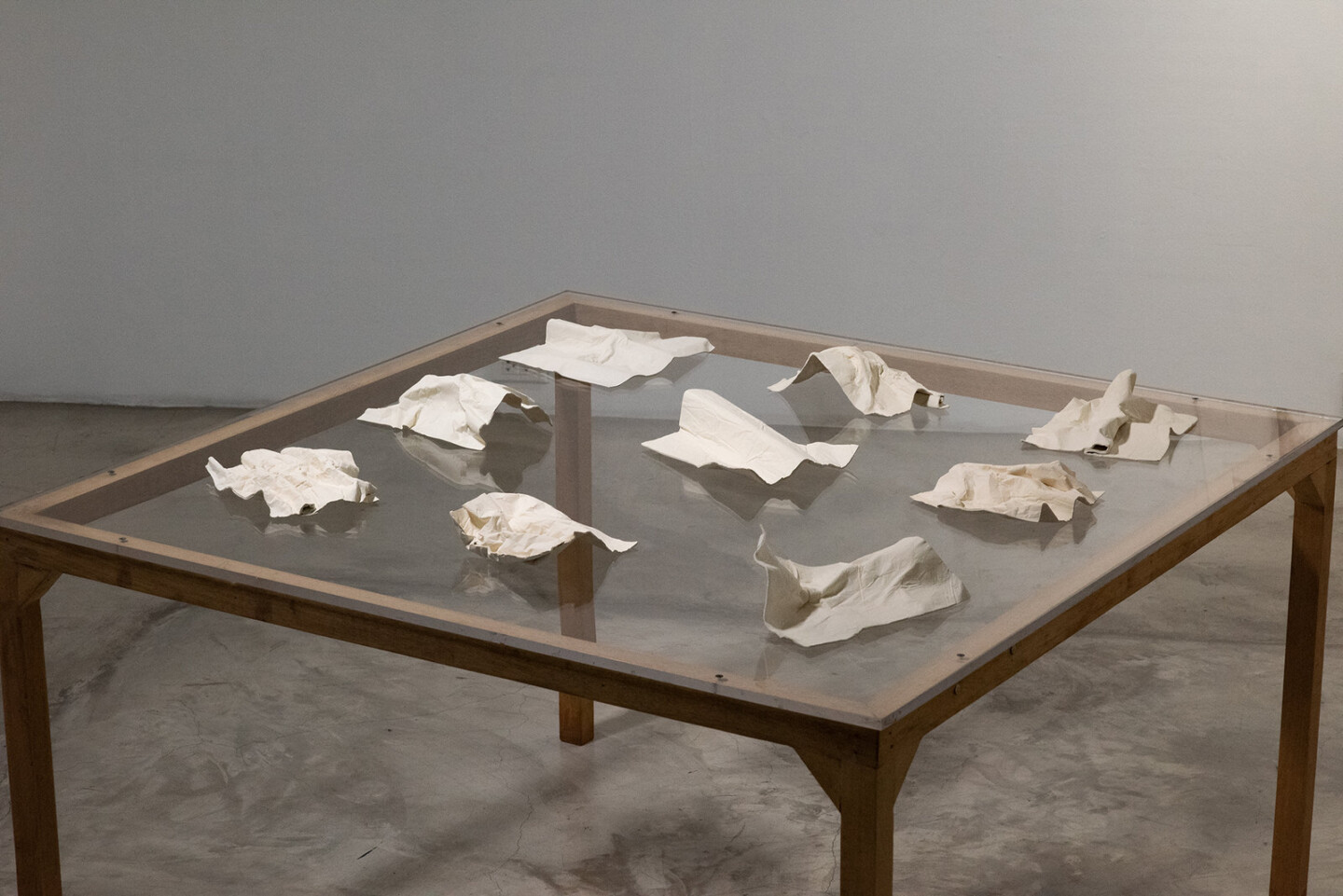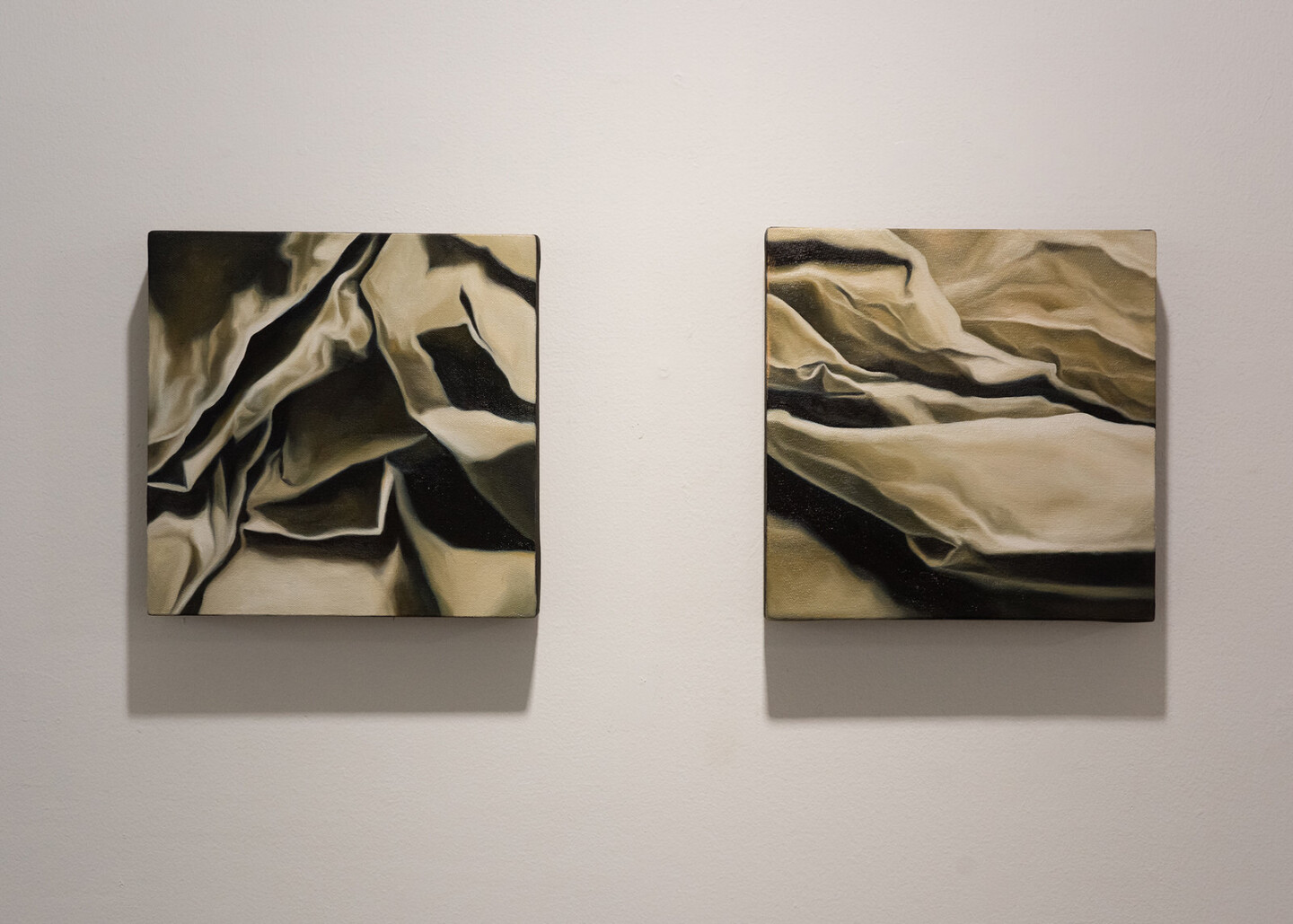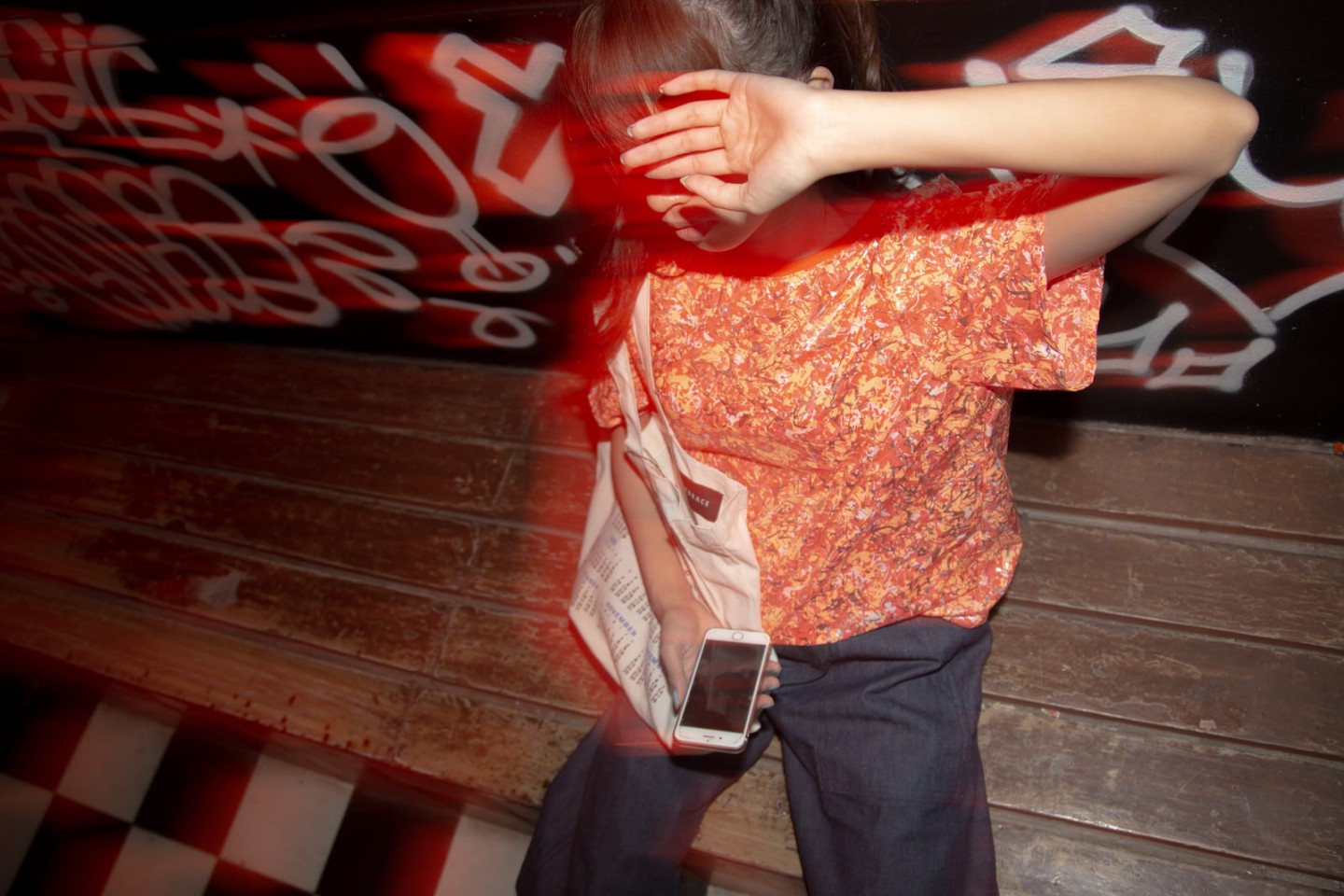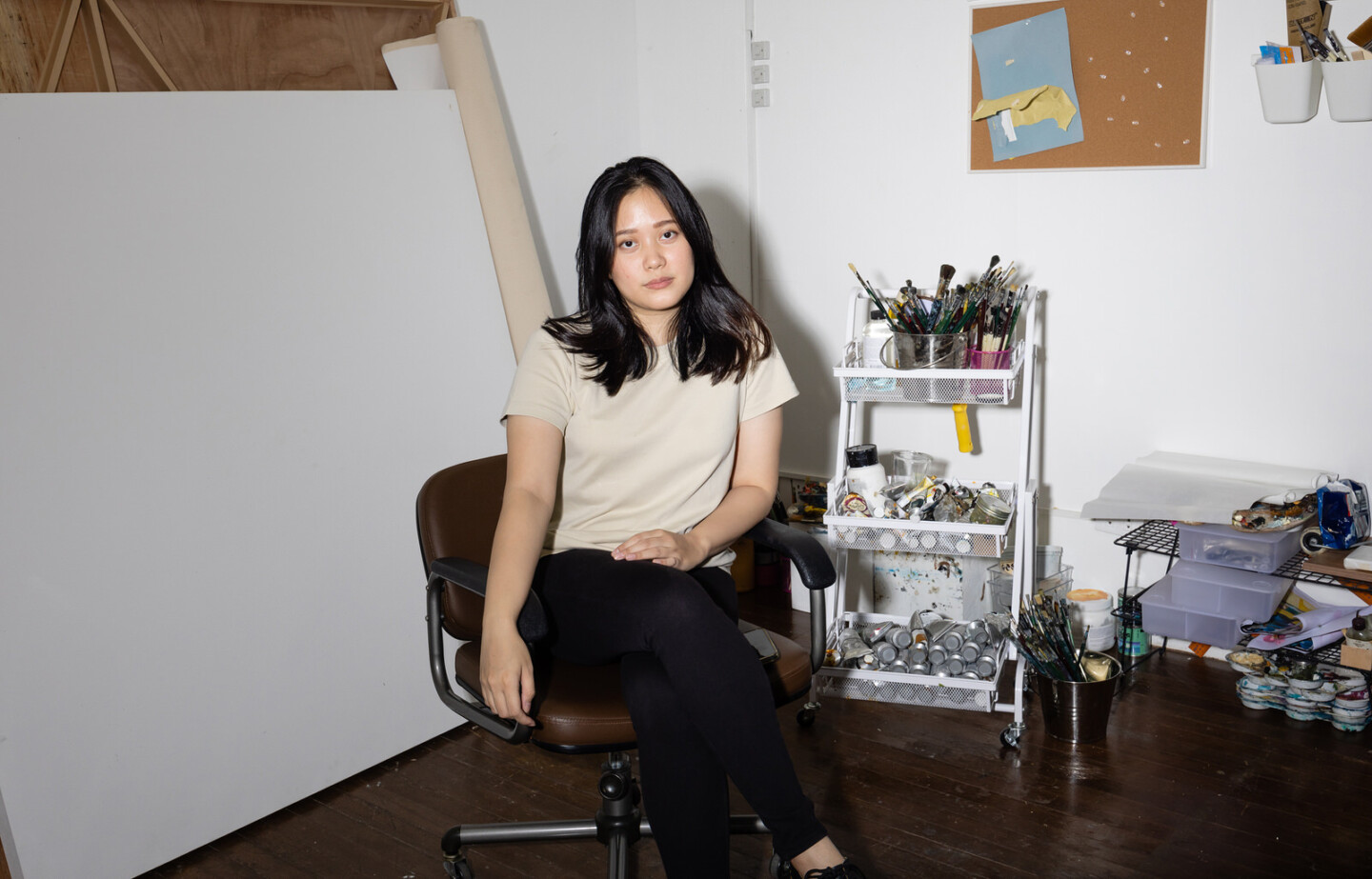
The art world, an ever-evolving community, is an advantageous space for young artists to showcase their fresh perspectives and new narratives. One young artist who shows promise is Ayka Go.
When one sees Ayka Go’s work, they are faced with something that looks “simple” on surface level but at the same time has deeper significance. One wonders what her artwork can mean. Her works seem colorful and innocent, but what makes it even more striking is it makes use and depicts paper and objects that signify a subject that everyone can relate to—childhood.
Ayka Go is a young Filipino artist who has held exhibits in prominent galleries in Metro Manila, like Finale Art File, West Gallery, and Underground, as well as in Hong Kong, Paris and Singapore. She lives and works as a full-time visual artist in Manila. Her works present stories and ideas regarding childhood memories and philosophical thoughts. What makes them visually-striking is her use of three-dimensional paper foldings.
She explores the different ways paper can be presented, and then paints them on canvases. Furthermore, she adds a personal touch by getting inspiration from her own childhood memories, like making dollhouses and using pages from her childhood diaries.
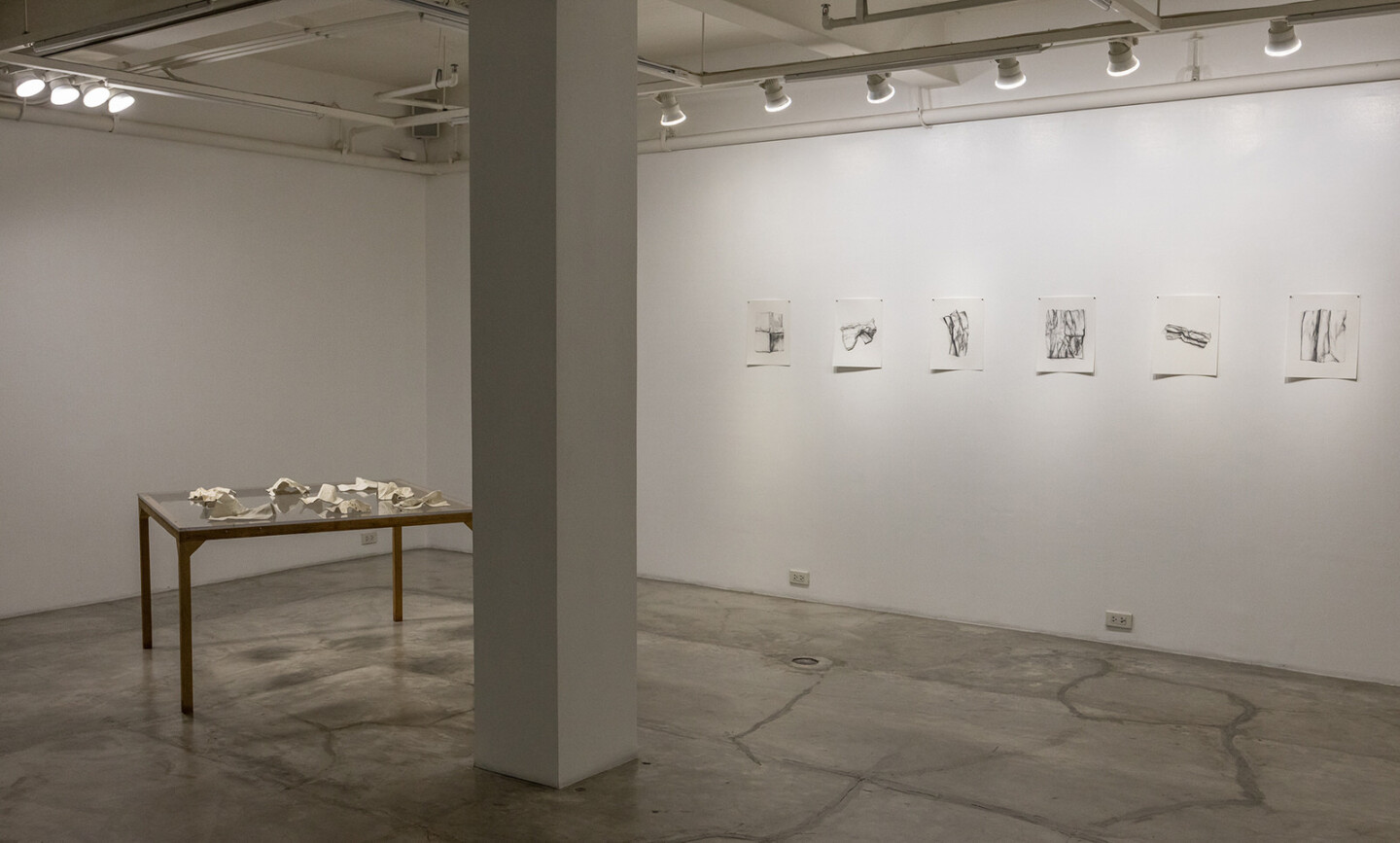
‘shape and form’ exhibit by Ayka Go at West Gallery
In a zoom call with Ayka Go, we chatted about the prevalence of paper in her works. She gives an enlightening discussion on the concept of her works, her medium of use, limits to paper, the process involved in her artworks, and other matters related to her craft.
When asked to describe her works in her own words, she explained that she can’t really pinpoint a certain term because they are evolving. “[My] works revolve around memories ko. Pero kasi diyan nag-start thesis ko tapos nag-branch out. Ngayon medyo nag-evolve siya.” (My works revolve around my memories. It began with my thesis and since then it branched out. Now it seems to have evolved). She says they are now nonrepresentational. Her first few works used to be dollhouses and now she explores by making collages. When it comes to her artworks, she is just doing whatever she wants to do.
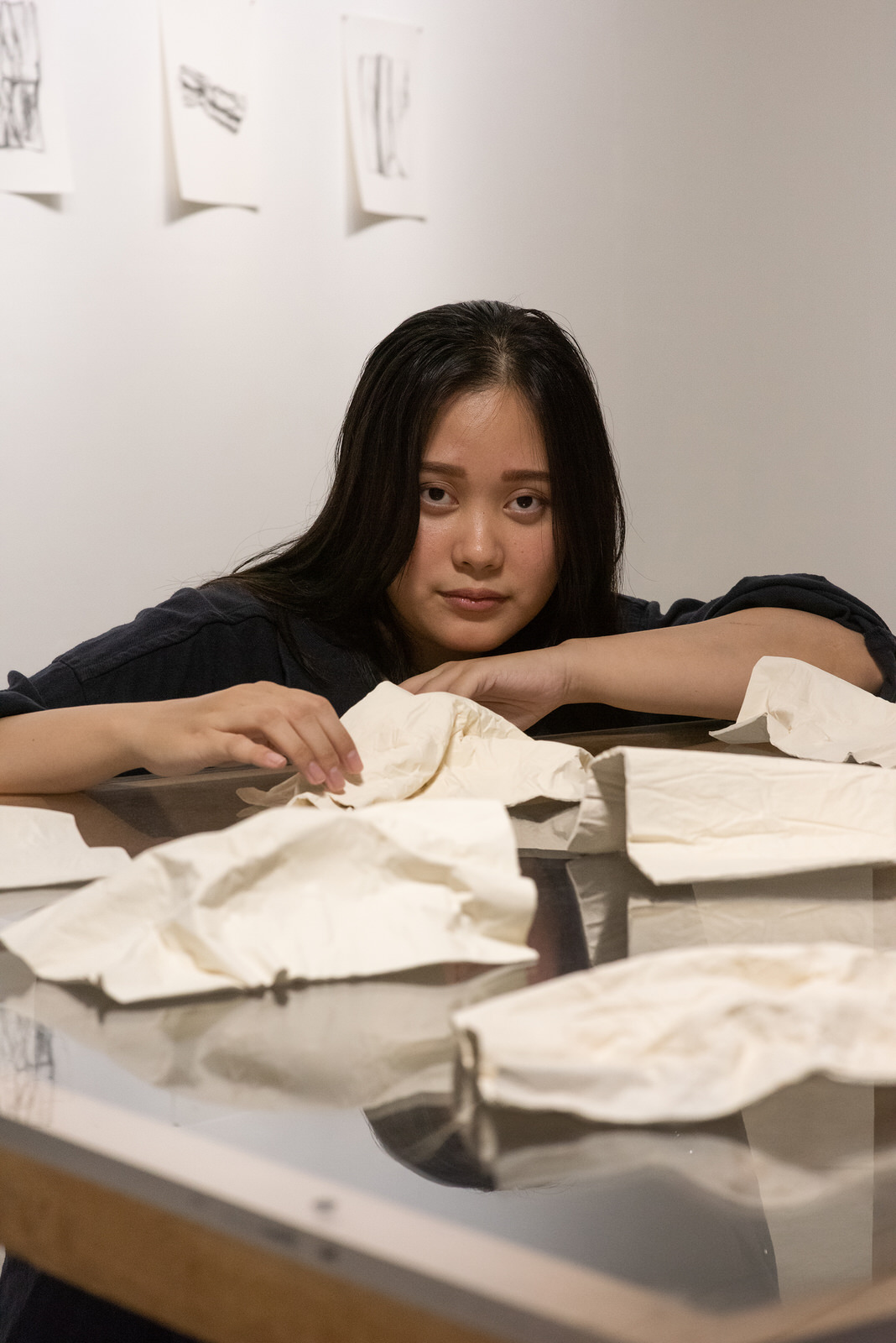
A very prominent and favorite medium for Ayka is paper. The choice of medium in her works is both intentional and a personal preference. It stems from her growing up surrounded by a lot of it. “When I was young and it would rain, we would fold toy boats then we would play in the puddles. My dad would fold paper planes and we would play with it. I think, early on, my dad wanted me to think outside of the box.” She also shares that when the situation calls for it, they would improvise with objects available outside, or those easily disposed. An example would be when they played house or cook with the neighbors, they would use a small plastic kitchen set with rocks and leaves as the ingredients. “It was very personal, and then growing up I kept a childhood diary with me. In college, our professors heavily imposed on us that instead of writing, we should draw.”
Ayka as a child also loved to play with Barbies, and at one point, she wanted a dollhouse. Her family didn’t like to buy the expensive ones, but still it was her father’s desire to give her a dollhouse. Instead, he made her a dollhouse out of illustration boards and paper. He made it as best as he could. She was amazed at her father and at how creative he was. She found it very personal.
But she also recalls the limits of such a work. It didn’t last long because it was made of a fragile material: paper. Years later, she relates how this problem is present to her current situation. “I guess hindi ko napapashow yung mga paper works ko kasi I know how it is like. Hindi siya tatagal compared to paintings. Like sina Mona Lisa, yung mga oil canvases, they stay up for a hundred years. Paper is very fragile.” (I can’t show my paper works because I know how they are like. They won’t last long compared to paintings. Unlike the Mona Lisa and oil canvases that stay up for a hundred years, paper is fragile).
The limits of paper becomes even more palpable whenever she is faced with her dream of doing residency abroad. She wants to try painting outside, but there are limits. She doesn’t know how to paint them en plein air in her own version, because it’s more of capturing, as much as you could, what is outside, or “capturing the proper light”. Another example of the limit of paper is painting portraits. “I have to think of ways of how to because last year I wanted to do portraits, but I had to think of ways how to present it in paper.”
When asked if she thought of ways to prolong these paper works, she admits that she has. “May mga studies ako, like yung ginawa ko with ALT, yung plane with Finale. Tapos yung study na yun, actually I kept it. I keep all my studies kasi gusto ko malaman how long will they be able to stay.” (I have studies like the plane for Finale during ALT. I kept that study. I keep all my studies because I want to know how long they will be able to stay.) She shares how works that involve colored paper don’t last as long as those involving white paper. She notes that it may be caused by how the color pigment makes it more fragile.
But Ayka loves paper. There may be limits on what she can do with it, but it makes her focus more on what can be done. “Other artists, they can just take pictures of objects and things and they can just paint. But for me, like when I try to fold things and make things with paper, most of the time it doesn’t work out so it’s a trial-and-error process and takes a while.”
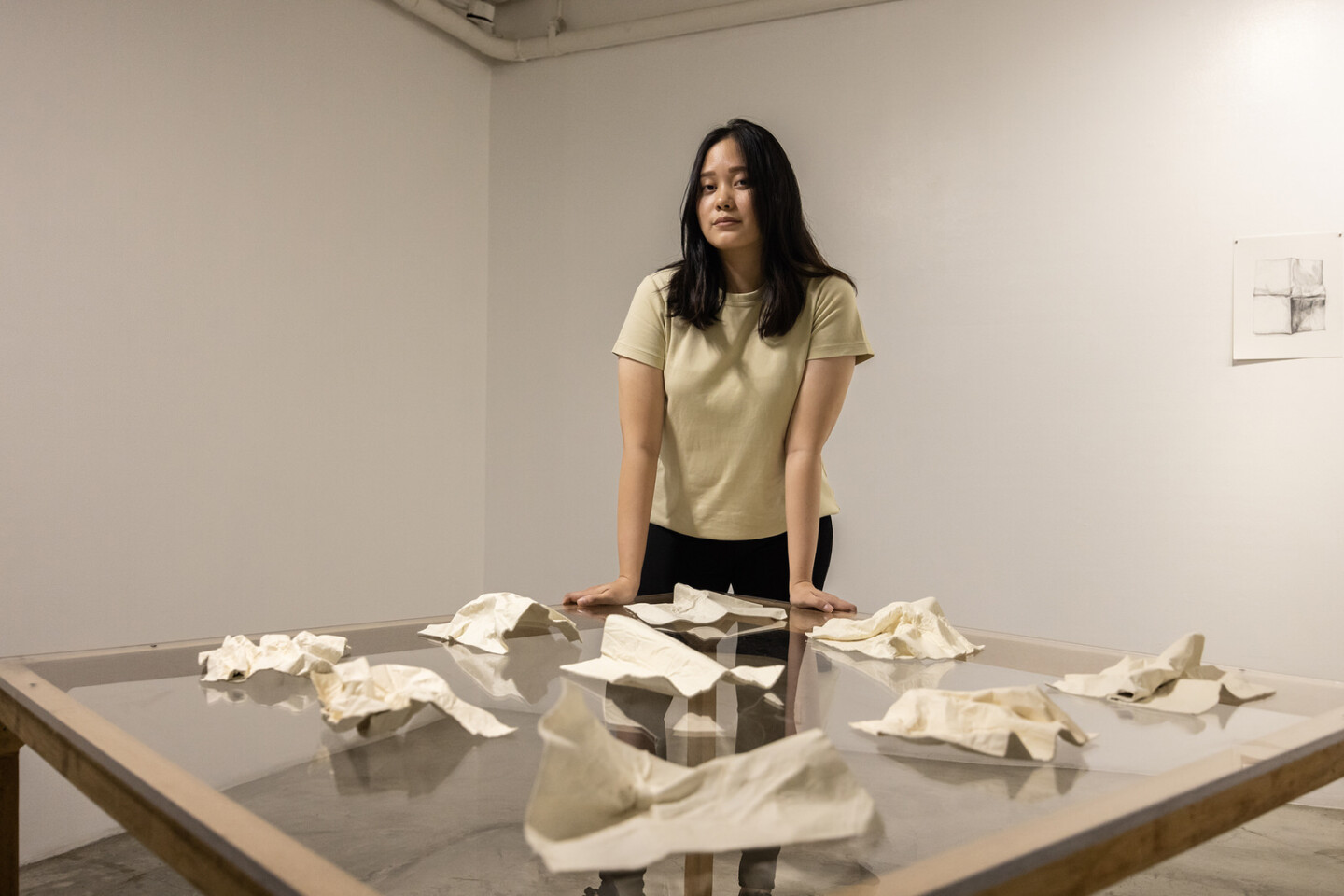
“You can’t do everything with paper. Tsaka kailangan mo mag-experiment… May mga studies ako na it takes a month to make. One week ganun. Minsan may mga hindi nagwoworkout…Pero sa collages it’s more of a freer process. Mas enjoyable.” (You can’t do everything with paper, and you need to experiment a lot. I have studies that take a week or month to make. Sometimes it doesn’t work out. But for collages, it’s a freer process. More enjoyable.)
Before painting her works, she constructs all the paper compositions and collages herself. Except for the usual paper cranes and paper boats, she doesn’t make paintings of origamis because she feels that would be plagiarism. She says even by the meaning of origami, they are only representations and not the object or thing itself. For example, a folded apple is not really an apple you can eat. It’s visually something you can touch and hold but it doesn’t function as a true apple.
When she makes her own works, she first wraps and carves the toys and objects with the papers she bought. Sometimes the paper rips and sometimes it doesn’t workout, so she repeats the process. “Kasi… kapag binalot mo yung object hindi siya in one go. Parang you have to make it a point na it has to…Kahit balot siya, visually, makita parin ng mga tao na rubber duck ito.” (When you wrap the object, it’s not in one go. You must make it a point that, even if it’s wrapped, people can visually see it’s a rubber duck.)
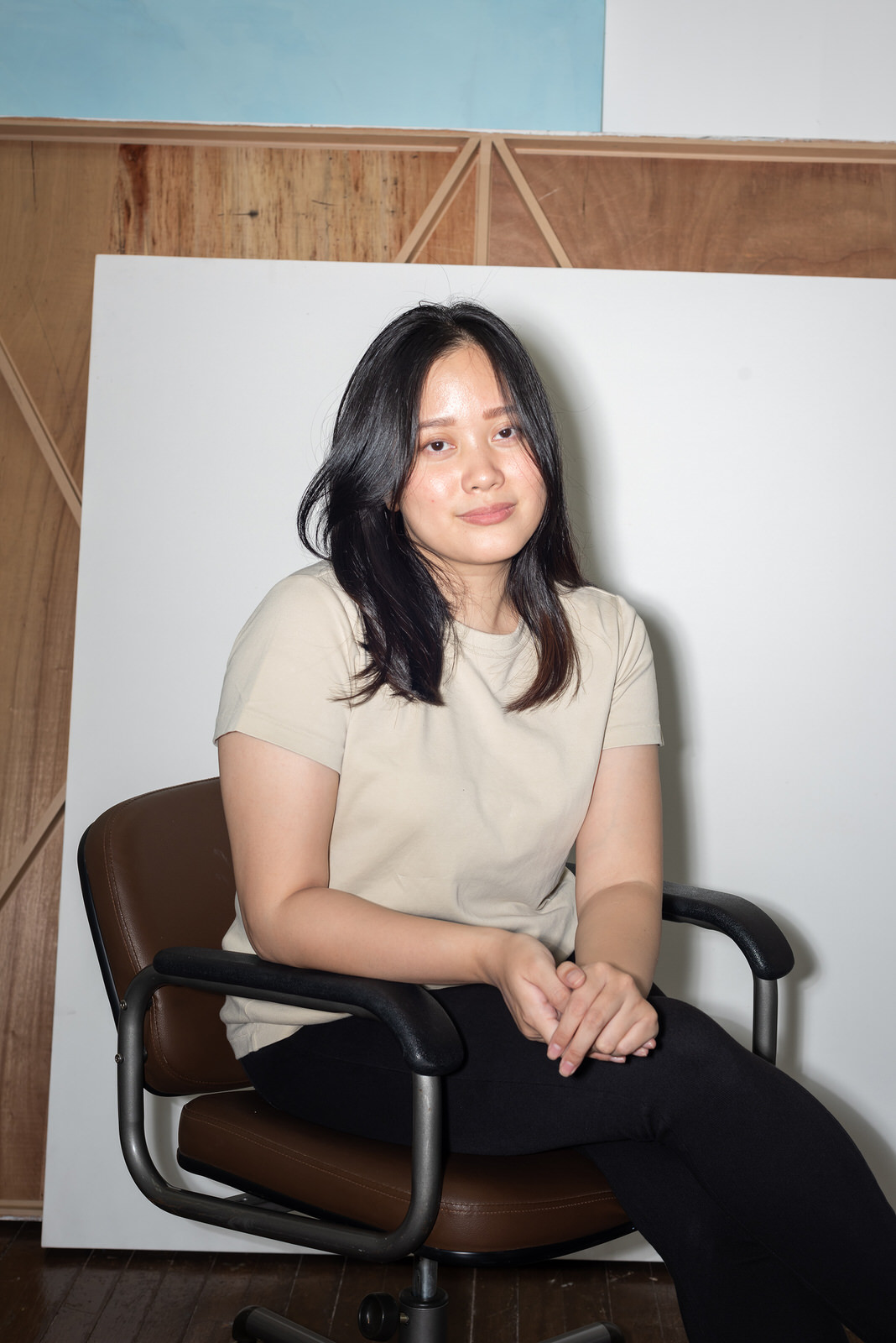
For her collages, she makes use of papers that she kept in her studio. Some of the shapes of these papers are unintentional because they were used from her previous studies. She isn’t like other collage artists who have it planned. It’s an everyday spontaneous process for her and, at times, she finds it difficult to do. “Mayroon akong collages na ano yung title nila “Collage Study”, like for example “Collage Study 7.8”. Kasi 7th collage ko na siya pero 8 times ko na siya na-revise.” (I have collages that are titled “Collage Study”, like for example “Collage Study 7.8”. It’s because it’s my 7th collage but I’ve revised it 8 times.)
When it comes to working with paper, aside from the form or collage it represents, the paper’s content can be a point of interest too. Whether or not she wants people to question what’s inside the paper or just notice its materiality, Ayka believes she wants both. She wants people to question what’s inside and she wants them to notice its materiality.
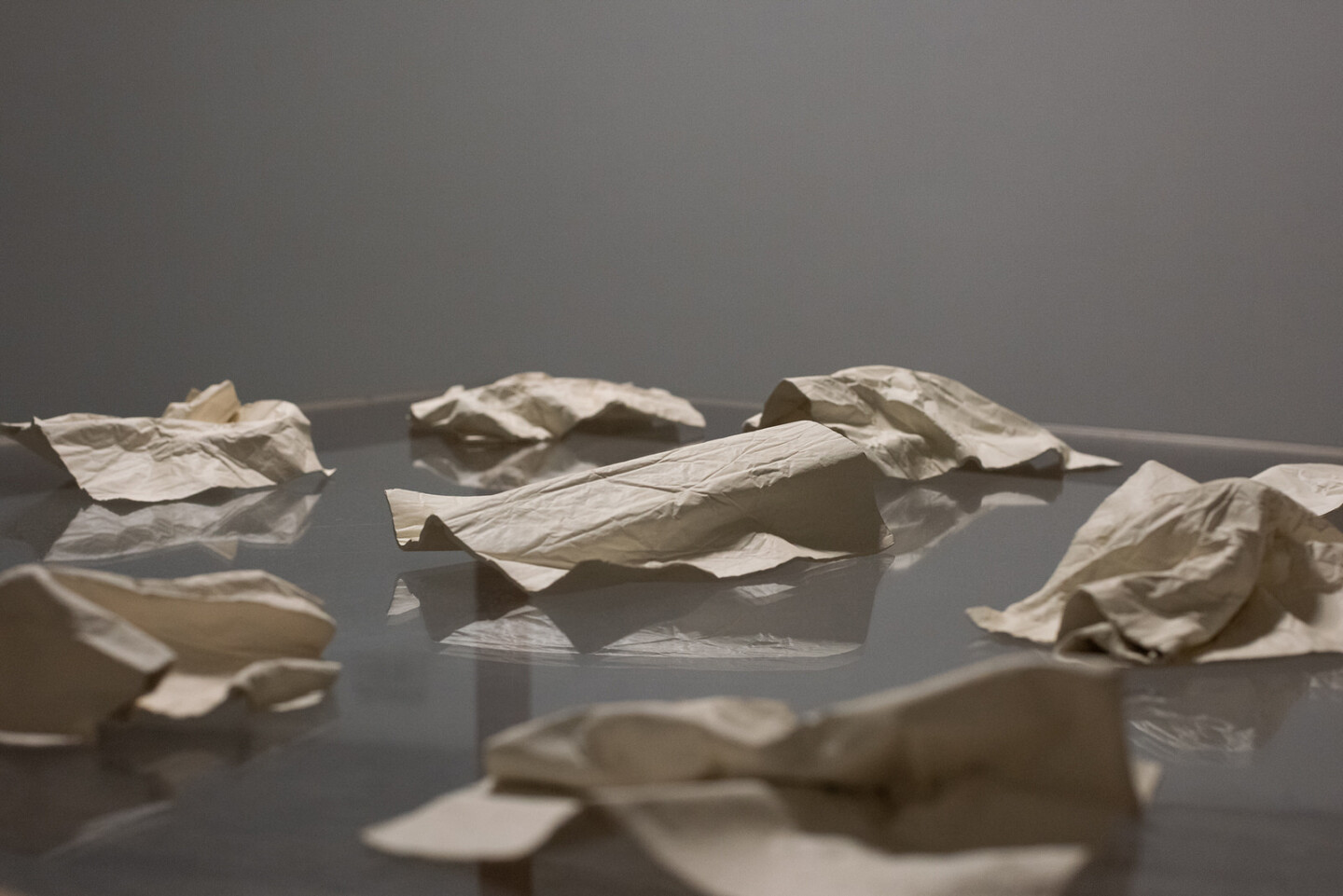
“I think hindi ko rin mapipigilan how people perceive my work…for example when you see an apple, para sa akin apple siya, but for a friend who is looking at it “Uy it’s an aged apple.” For another friend, manonotice niya yung kulay. So iba-iba siya per person depending on yung…experience ng tao and how they perceive things.” (You can’t stop how people perceive my work. For example when you see an apple, for me it’s an apple, but for one friend it’s an aged apple, and another friend, they will notice its color. It’s different per person depending on the experience of the person and how they perceive things).
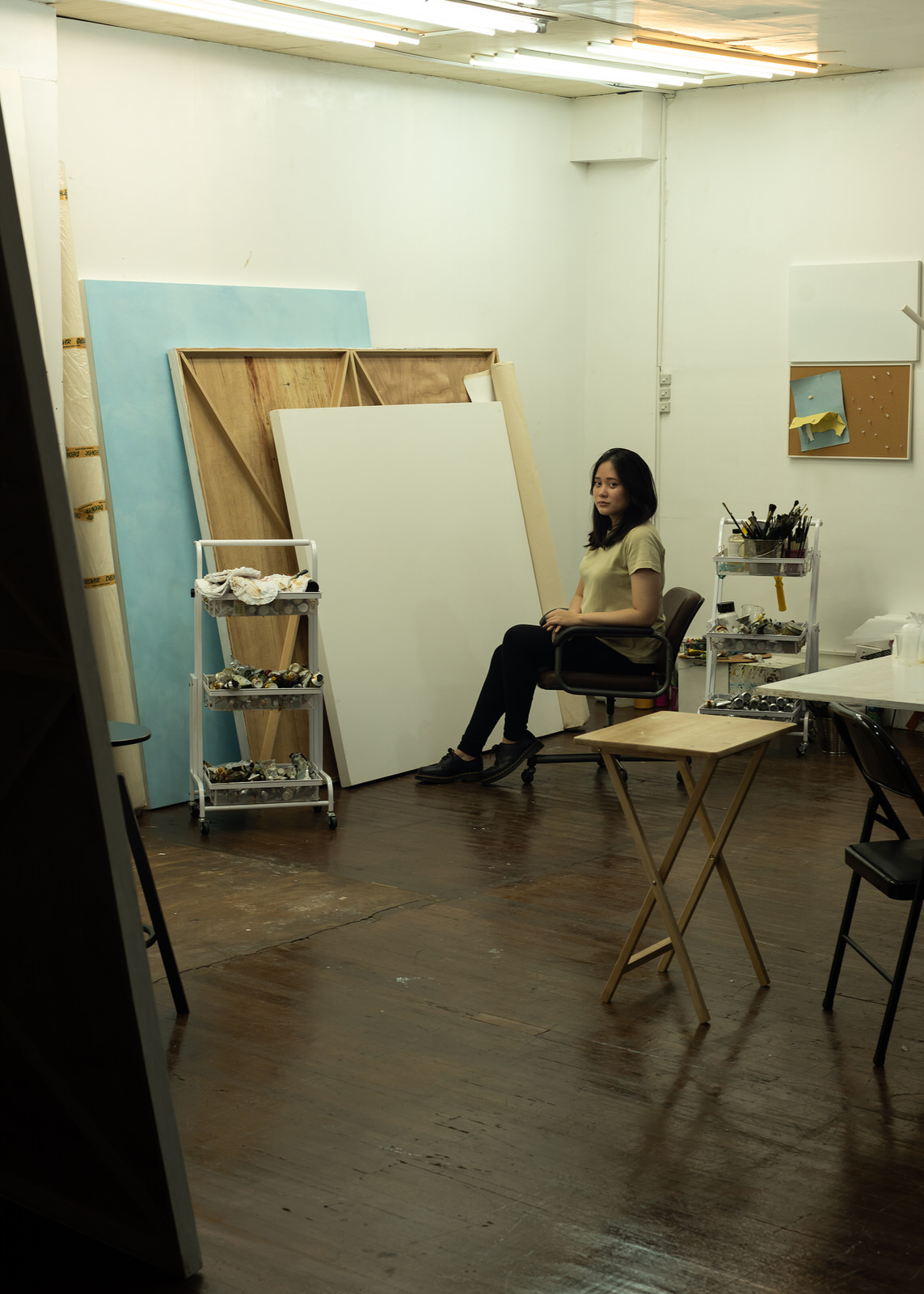
She finds happiness when people think this way about her works. It means they found a connection to her work. For her there is no right or wrong with art. “We just interpret these.”
Paper is a unique medium—plain at first glance, but full of potential and hidden stories once you go deeper. Ayka enjoys the challenge, the thrill, the frustration, and later the realization that her work turns out nicer than the previous study.
Some people ask her, “Hanggang kailan mo ba gagawin yung paper folding?” (Until when will you be pursuing paper folding?) To which her usual reply is, “As long as I still enjoy doing it and there’s still a lot of things I can do with it, hindi ko kaya siyang bitawan.” (As long as I still enjoy doing it, and there’s still a lot of things I can do with it, I’m not letting it go).
CREDITS
WRITER Mica Sarenas
EDITOR Tricia Quintero
PHOTOGRAPHER Ricardo Yan
SUPPORT PURVEYR
If you like this story and would love to read more like it, we hope you can support us for as low as ₱100. This will help us continue what we do and feature more Filipinos who create. You can subscribe to the fund or send us a tip.

